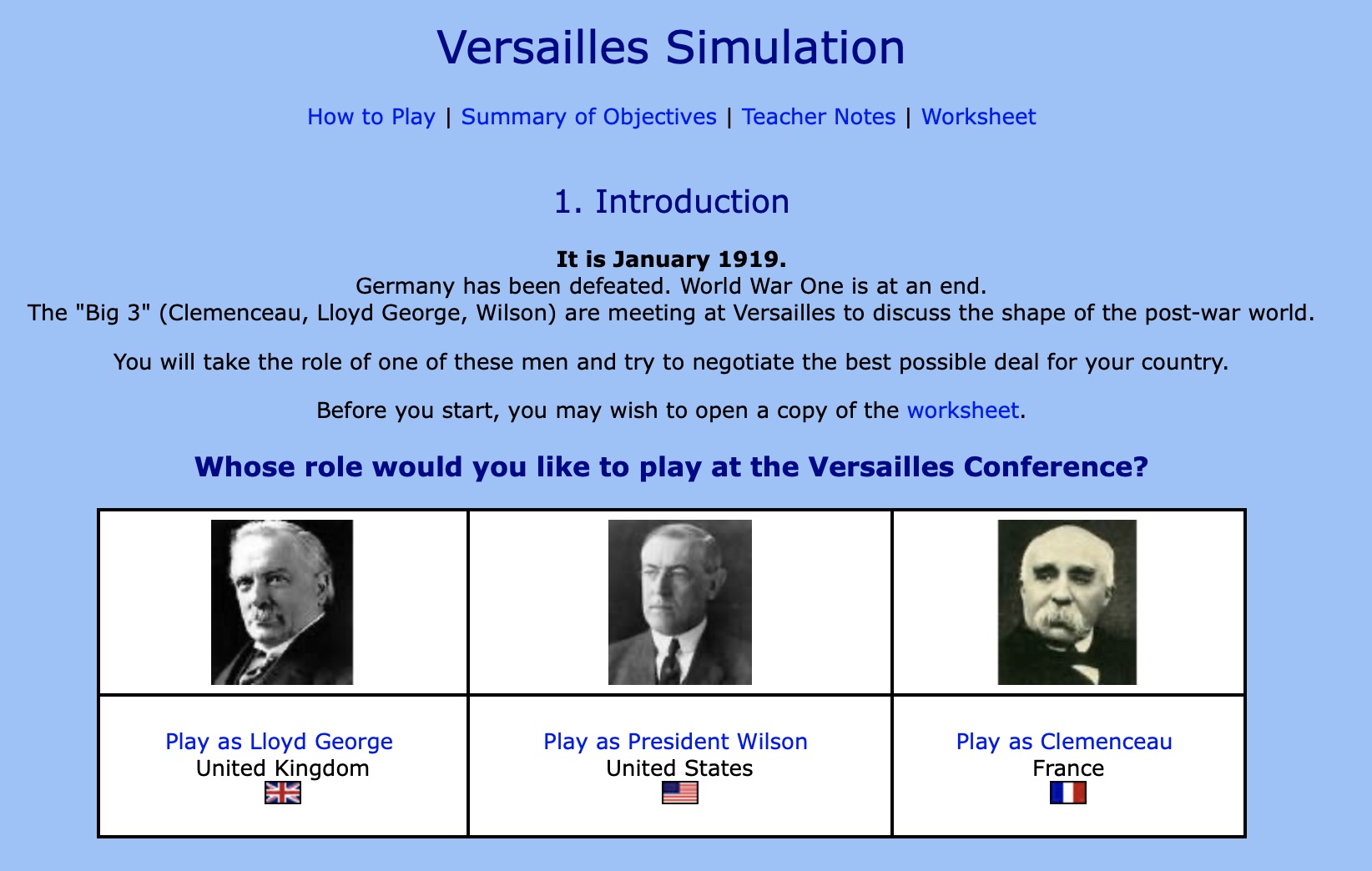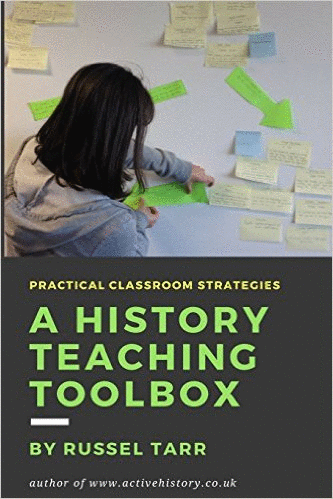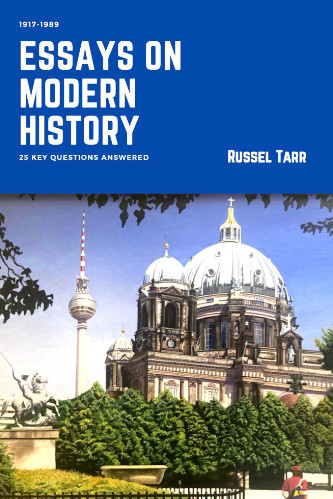Transform your history classroom
ActiveHistory provides educational, award-winning interactive simulations, decision-making games, self-marking quizzes, high-quality worksheets and detailed lesson plans for the school history classroom. All resources have been designed by full-time history teacher Russel Tarr.
An ActiveHistory subscription provides everything you need to construct and deliver a History course from start to finish for the entire 11-18 age range!
These consist not just of lesson plans, worksheets and teacher notes, but also multimedia lectures and interactive games and historical simulations ideal for remote learning and self-study.
World History teaching resources for the high school classroom: lesson plans, worksheets, quizzes and simulation games for KS3, IGCSE, IB and A-Level teachers.
The following resources are a completely self-contained scheme of work which remove the need for textbooks.
Sourcework Assignment Pack
A comprehensive pack of sources and questions in the style of GCSE/IGCSE examinations, designed to be printed off at the beginning of the unit and used as homework exercises over the course of several weeks.
What problems confronted the Big Three at the Versailles Conference?
Easily overlooked, this helps students understand the complex political, economic and social backdrop to the Peace Conference.
What were the Aims and Motives of the Big Three?
Designed to be completed through a teacher-led lecture. Also available as a pdf file. There is also a completed teacher copy.
The 14 Points [Optional Extension Activity]
An extension or homework task.
The Territorial Terms of the Treaty of Versailles: A Role-Play Exercise
An effective way of getting students to assess not only what did happen, but whether these were the best decisions that could have been reached. A teacher lesson plan is also essential for this exercise. A simpler exercise is available as a pdf file.

The Territorial Terms of the Treaty of Versailles: Conclusion
A map-based activity to help students visualise the location of the places discussed in the previous lesson.
The Other Terms of the Versailles Treaty: Reparations, Armaments, War Guilt, League of Nations
Students debate the pros and cons of the various decisions taken by comparing them to alternative courses of action.
Cartoons about the Treaty of Versailles
Designed to consolidate knowledge and to develop visual reasoning skills.
Who was happiest with Treaty of Versailles?
Students assess the extent to which each of the Big Three were happy with the terms of the Treaty.
Debate: "Was the Treaty too harsh, or not harsh enough?"
Students are placed into groups and use a variety of written sources to marshall an argument.
Crossword Test: The Treaty of Versailles
To test factual knowledge.
The Treaty of Versailles Summary Sheet
A printable worksheet covering the aims of the Big 3, the decisions reached an an assessment - with a completed teacher copy.
Interpretation Battleships: The Treaty of Versailles
After reviewing the terms of the Treaty, decide where each of the following words belong in the grid:
Saar | Colonies | Rhineland | Alsace-Lorraine | Polish Corridor | Reparations | Armaments | War Guilt | League of Nations
Compare your ideas with a partner, then as a class. Be prepared to explain your choices and explain accordingly.
TIP: For a more competitive and engaging approach, your teacher might instead arrange this lesson in the form of a game of ‘Interpretation Battleships!’ (rules here).
Sourcework: The Peace Treaties After World War One [GCSE Level]
Sourcework: The Peace Treaties After World War One [IB Level]
Sourcework assignments for different age groups.
The Other Peace Treaties
A "Cut and Paste" exercise which provides students with a one-side summary of the terms and results of the treaties imposed on Germany's allies. Also available as a printable pdf file.
The Treaties of Sevres and Lausanne [1]: The Middle East | teacher answer sheet
Students learn about the conflicting promises made by the British in the Middle East during World War One, and then tackle this: "It is now 1919. You are Prime Minister David Lloyd George, about to head off for the Paris Peace Conference. Complete this official statement on British plans for the Middle East of no more than 150 words, designed to satisfy the Arabs, the French and the Jews. Your teacher will show you what he actually decided afterwards".
Online Simulation: The Treaties of Sevres and Lausanne [2]: The Near East - How successfully did Lloyd George handle Turkey after World War One?
"In this simulation you will take on the role of an advisor to the British Prime Minister, David Lloyd George. You will be asked how you think he should handle the Ottoman Empire after World War One. You will also be asked factual questions to test your knowledge. Think carefully about each of your responses"
Interactive quizzes / simulations
The Treaty of Versailles Role-Play Simulation
An artificial intelligence simulation, complete with worksheets. Students choose which member of the Big Three to be in role as, and then try their best to obtain their objectives over a series of rounds of negotiations. A good way of rounding the unit off, introducing it, or revising it!

Interactive Cartoon Analysis: The Peace Treaties after World War One
Analyse a series of cartoons by hovering over details and answering exam-style questions. When you have finished, the computer will provide you with a printout comparing your answer to a model answer. A great way to revise and develop sourcework skills.
The Treaty of Versailles: End of unit self-marking factual test
This is a great way to test knowledge at the end of the topic. Each student in the class is given 30 randomly selected questions from a database in mutliple-choice format. At the end of the exercise, the teacher can access all the scores at once to put into the markbook.
Self-Marking Quiz: Peace Treaties after WW1
"Fling the Teacher" Quizzes: The Treaty of Versailles | The Peace Treaties after WW1
Keyword Challenge: The Peace Treaties after WW1 | Rules of the Game

© 1998-2025 Russel Tarr, ActiveHistory.co.uk Limited (Reg. 6111680)
1 Torrin Drive, Shrewsbury, Shropshire, SY3 6AW, England
Privacy Policy | Contact







